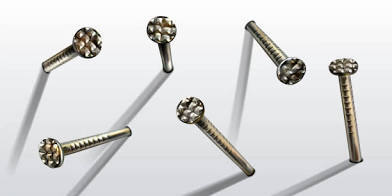Transforming Precision into Power in Physical Therapy
In my years as a physical therapist, I've found one key to consistently better outcomes: specificity. To achieve this, I developed a tool known as the 3x3 Localization for Specificity Matrix—a systematic way of locating and treating dysfunction precisely.
Level 1: The Direct Treatment Hand (Identify the Dysfunction)
Your direct treatment hand is essential for sensing the exact spot, depth, and directional angle of dysfunction. Think of dysfunction as a vector—a nail embedded at a specific angle. Your fingers discern whether the problem is superficial or deep, muscular, neural, visceral, or bony, ensuring you target precisely what needs attention.
Level 2: The Assisting Hand (Motion to Refine Localization)
The assisting hand helps to clarify the exact point of dysfunction through gentle movement. By moving the patient's limb or spine through flexion-extension (sagittal plane), side bending (frontal plane), or rotation (transverse plane), you amplify tension directly into your fingertips. Crucially, these movements must remain subtle; pushing beyond the dysfunction can obscure precise localization, just as pulling too hard on a knotted rope can cause you to miss the knot.
Level 3: Active Contraction and Force Application
Finally, incorporating therapist-driven active contractions (usually isometric) further refines your specificity. Patients actively engage through gentle muscle contraction in flexion-extension, side bending, or rotation. Additionally, you may include compression or traction forces to enhance specificity further. This active component helps ensure deeper, more lasting therapeutic outcomes.
Integration and Retention
It’s crucial to reinforce gained motion through neuromuscular reeducation. Without retraining, improvements are temporary. The matrix not only guides precise intervention but supports lasting recovery through effective retraining strategies.
Benefits of Using the 3x3 Matrix:
-
Increased precision in identifying dysfunction
-
Enhanced treatment effectiveness
-
Deeper, lasting outcomes through active patient involvement
-
Improved retention of therapeutic gains through neuromuscular reeducation
Integrating this simple yet powerful matrix into your practice can significantly elevate patient outcomes, ensuring your therapeutic efforts are effective, precise, and enduring.
3. Chart of the 3x3 Matrix
| Level |
Description |
Dimensions |
| Level 1 |
Direct Treatment Hand identifies dysfunction's precise vector (location, depth, direction). |
- Location- Depth- Direction (Vector) |
| Level 2 |
Assisting Hand moves through available planes, enhancing localization by tension. |
- Flexion-Extension (Sagittal)- Side Bend (Frontal)- Rotation (Transverse) |
| Level 3 |
Active Localization via patient contraction and therapist-applied forces. |
- Active Contraction (Flexion/Extension)- Active Contraction (Side Bend)- Active Contraction (Rotation)- Optional: Compression/Traction
|
